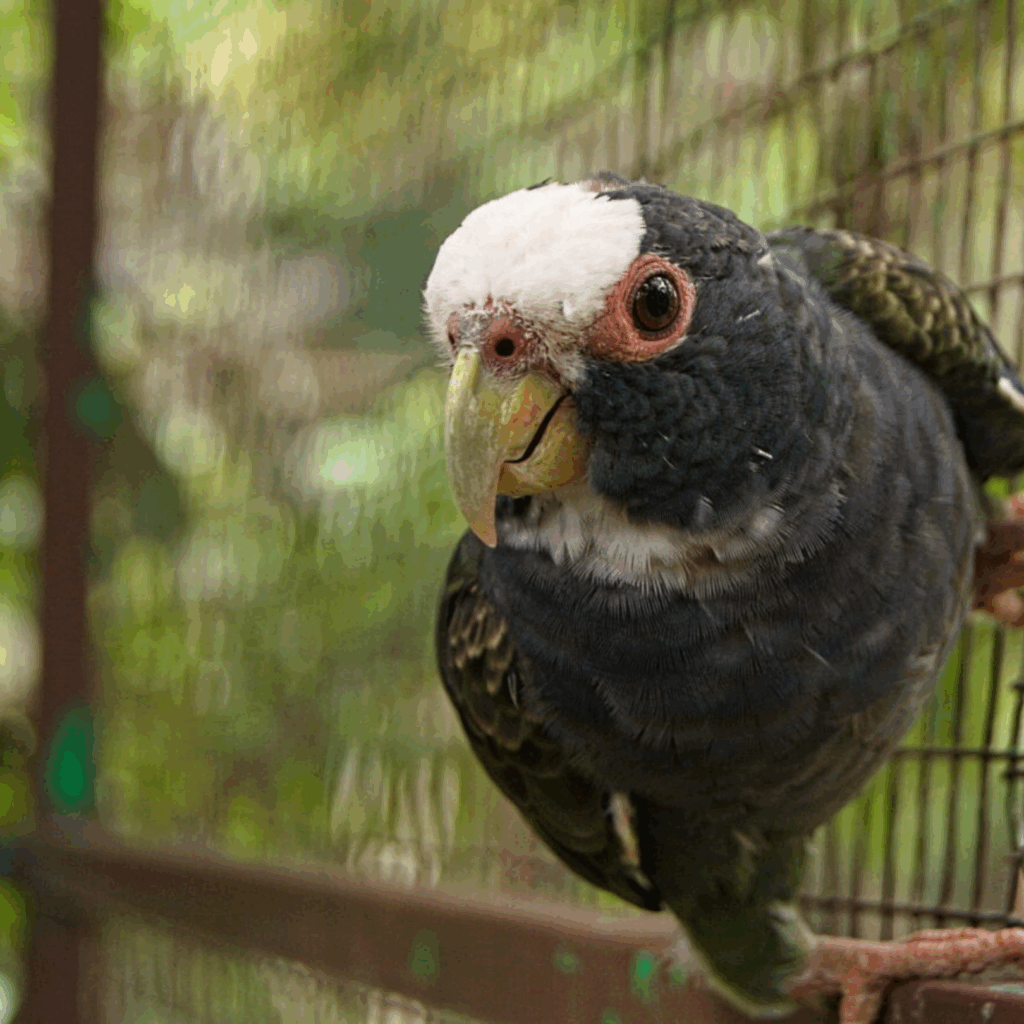White-Crowned Parrot
Species:
Taxonomy: (Pionus senilis)
Spanish Name: Loro mediano de color azul verdoso
Other Common Names: white-crowned pionus
Story:
I am the only parrot of my species to reside at Alturas Wildlife Sanctuary at the moment. I was kept as an illegal pet until I was confiscated and taken to a different sanctuary that closed down, and finally found my home here. Even though I am the only white-crowned parrot, I get along very well with the blue-headed parrots that I live with. The team here at Alturas keeps a close eye on me to make sure I am not displaying any concerning behaviors as a result of being the only one of my kind, but so far, I have not.


